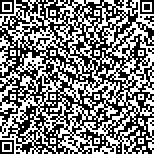杨涓,冯珍.不同频次神经肌肉电刺激治疗脑卒中后咽期吞咽障碍的疗效观察[J].中华物理医学与康复杂志,2017,39(2):122-126
扫码阅读全文

|
| 不同频次神经肌肉电刺激治疗脑卒中后咽期吞咽障碍的疗效观察 |
|
| |
| DOI: |
| 中文关键词: 神经肌肉电刺激 治疗频次 脑卒中 咽期吞咽障碍 |
| 英文关键词: Neuromuscular electrical stimulation Frequency Stroke Pharyngeal dysphagia |
| 基金项目: |
|
| 摘要点击次数: 3716 |
| 全文下载次数: 5333 |
| 中文摘要: |
| 目的观察不同频次神经肌肉电刺激(NMES)对脑卒中后咽期吞咽障碍的治疗作用。 方法采用随机数字表法将45例咽期吞咽障碍患者分为治疗1组、治疗2组及治疗3组,每组15例。3组患者均给予神经肌肉电刺激治疗,其中治疗1组每天治疗1次,治疗2组每天治疗2次,治疗3组每天治疗3次;3组患者均常规进行基础吞咽训练。于治疗前、治疗1周、治疗2周及治疗4周时对各组患者进行才藤氏吞咽障碍分级评定,于治疗前、治疗2周后对各组患者行X线透视吞咽功能检查(VFSS),并对比3组治愈患者平均治疗天数。 结果才藤氏吞咽障碍分级评定结果显示:治疗1组、治疗2组患者后一时间节点显效率均显著高于前一时间节点显效率,差异具有统计学意义(P<0.05);治疗3组患者治疗1周、治疗2周时显效率均显著高于前一时间节点显效率,差异具有统计学意义(P<0.05),但治疗4周时显效率与治疗2周时显效率比较,差异无统计学意义(P>0.05);在相同时间节点比较,发现治疗2组、治疗3组显效率均显著高于治疗1组水平,差异具有统计学意义(P<0.05);治疗3组治疗1周、治疗2周时显效率较治疗2组明显增高,差异具有统计学意义(P<0.05),但治疗4周时发现治疗3组与治疗2组显效率组间差异无统计学意义(P>0.05)。VFSS检查结果显示:治疗2周时各组患者VFSS评分均较治疗前明显提高(P<0.05);并且治疗2组VFSS评分[(7.600±1.793)分]、治疗3组VFSS评分[(8.900±1.636)分]均明显高于治疗1组水平[(6.700±1.873)分],治疗3组VFSS评分亦显著高于治疗2组水平(P<0.05)。治疗3组治愈患者平均治疗天数较治疗1组及治疗2组均明显减少(P<0.05)。 结论NMES治疗脑卒中后咽期吞咽障碍具有较好疗效,且在每日1~3次治疗范围内,随着治疗频次增加疗效随之增强,治愈患者平均治疗时间亦明显缩短。 |
| 英文摘要: |
| Objective To observe the effects of neuromuscular electrical stimulation (NMES) at different frequency on post-stroke pharyngeal dysphagia. MethodsForty-five stroke survivors with pharyngeal dysphagia were randomly divided into treatment group 1,treatment group 2 and treatment group 3, eachof 15 patients. Patients in the treatment group 1, 2 and 3 received NMES once, twice and three times a day respectively. All the 3 groups were given conventional swallowing training. The swallowing function classification was conducted before treatment, as well as 1,2 and 4 weeks after the treatment. Before and 2 weeks after the treatment, X-ray examination of swallowing (VFSS) was taken to assess the swallowing function, and the average treating days of the 3 groups were compared. ResultsThe swallowing function classification showed that in treatment group 1 and 2, significant improvement was observed at this time point than that at the previous time point (P<0.05). In treatment group 3, after 1 and 2 weeks of treatment, significant improvement was found compared to those previously, but there was no difference between after 2 weeks and 4 weeks of treatment.At the same time points,the treatment group 2 and 3 showed higher efficiency than the group 1 (P<0.05). And compared with the treatment group 2,the treatment group 3 showed higher efficiency after 1 and 2 weeks of treatment (P<0.05), but there was nosignificant difference after 4 weeks of treatment. Two weeks after the treatment, the average VFSS scores of all groups were significantly higher than those before the treatment (P<0.05) and that of treatmentgroup 2 (7.600±1.793) and 3 (8.900±1.636) was significantly higher than that in treatment group 1 (6.700±1.873) , as was that of group 3 compared to group 2. Compared with the treatment group 1 and 2, the average treatment days decreased significantly in treatment group 3 (P<0.05). ConclusionNMES is effective in treating pharyngeal dysphagia after stroke. And within a certain range (1 to 3 times every day), with the increasing of daily treatment frequency, the effectismore significant and the average time of treatment shortens. |
|
查看全文
查看/发表评论 下载PDF阅读器 |
| 关闭 |
|
|
|